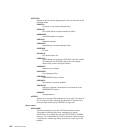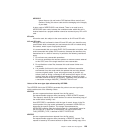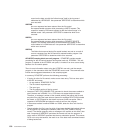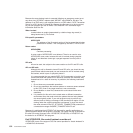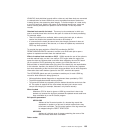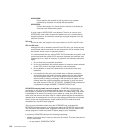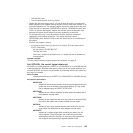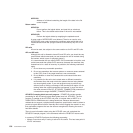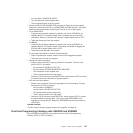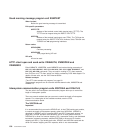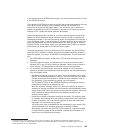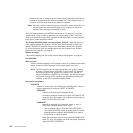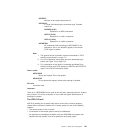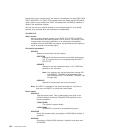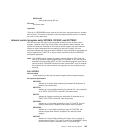UEPFLEN
Address of a fullword containing the length of the data in the file
control request.
Return codes
UERCFAIL
Do not perform the logical delete, and treat this as a backout
failure. This is the default action taken if the exit is not enabled.
UERCLDEL
Perform the logical delete by reapplying the updated record.
A return code of UERCPURG is not allowed. There is no need to set a
UERCPURG return code, because the conditions under which this exit is
invoked should mean that “purged” cannot be returned by any XPI or API
calls.
XPI calls
All can be used, but subject to the same caution as for API and SPI calls.
API and SPI calls
Although this exit is allowed to issue API and SPI calls, you should be very
careful about which commands you use because the exit is invoked during
file backout, which is part of syncpoint phase 2.
It is recommended that you restrict EXEC CICS commands to inquiries, and
avoid commands that update CICS resources, because the resources may
themselves be in a state of recovery. In particular, the following restrictions
apply:
1. Do not issue any recoverable operations.
2. Do not use operations that access systems or resource owners external
to this CICS, even if the target resource is non-recoverable.
3. Do not disable or close files, because this could cause further error
conditions.
4. It is possible for this exit to be invoked under a different transaction
environment from that under which the updates that are being backed
out were originally made. If your exit program wants to perform any
actions (such as writing a message to the terminal) that require it to be
running under the original transaction environment, it must first check
the value returned in the RE_ATTACHED_TRANSACTION parameter of
a transaction manager INQUIRE_TRANSACTION XPI call.
DFH$FCLD sample global user exit program: DFH$FCLD provides sample
processing for the file control logical delete global user exit, XFCLDEL. The exit
program, if enabled at the XFCLDEL exit point, is invoked when a WRITE to a
VSAM ESDS or BDAM data set is being backed out. Because these access
methods do not support a physical delete operation, special action must be taken to
provide a logical delete function. Normally this involves flagging the record in a way
that application programs that use the data set recognize as meaning the record
has been deleted.
There is more information about using the XFCLDEL user exit, and about the
DFH$FCLD sample program, in the comments within the DFH$FCLD source code.
In summary, DFH$FCLD performs the following processing:
v Makes a user trace entry if tracing is active for file control. This has trace point id
X'01F0' and traces:
136 Customization Guide



